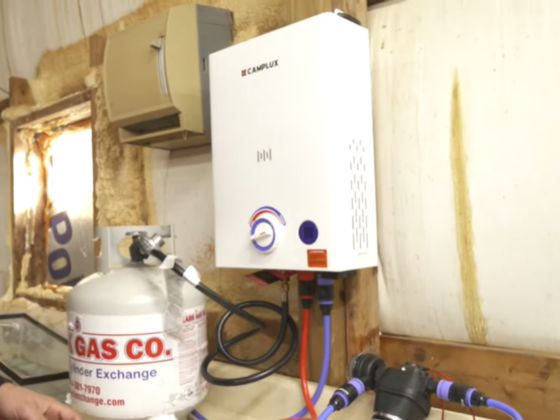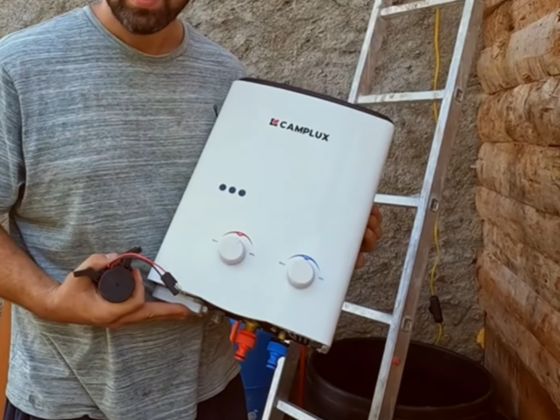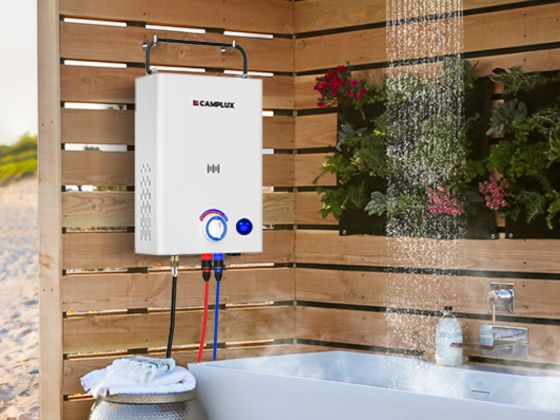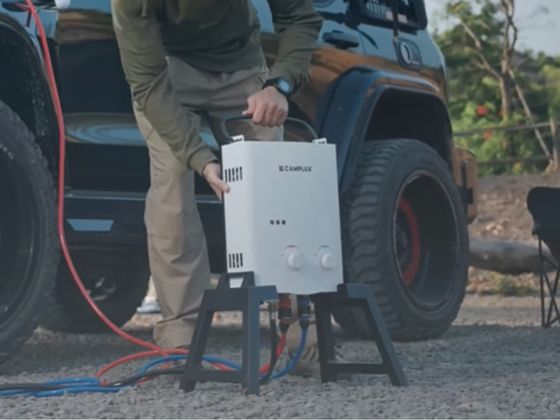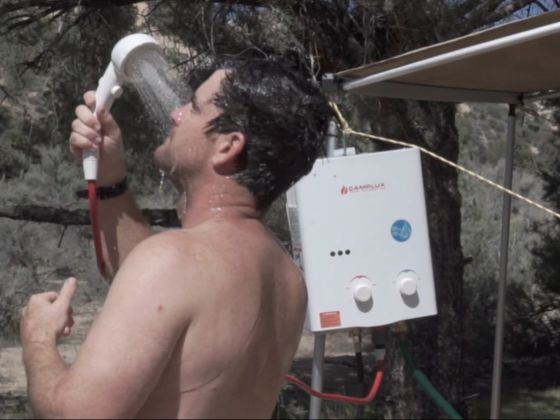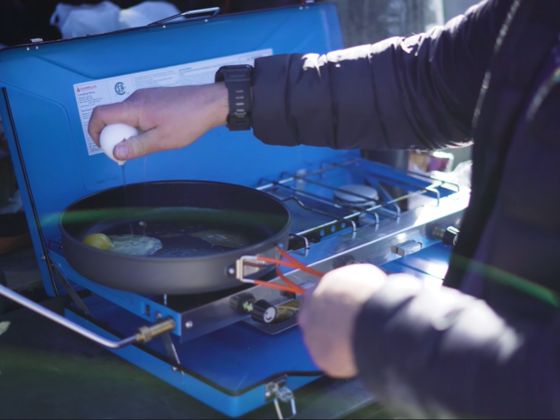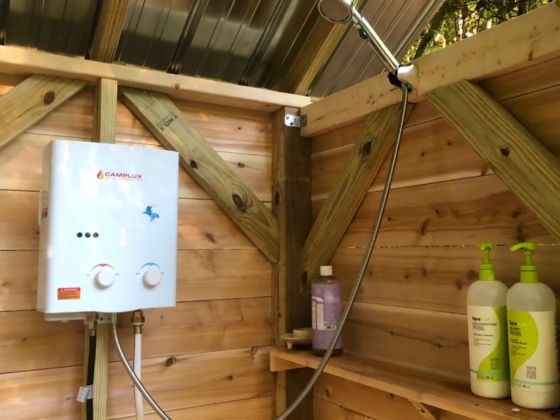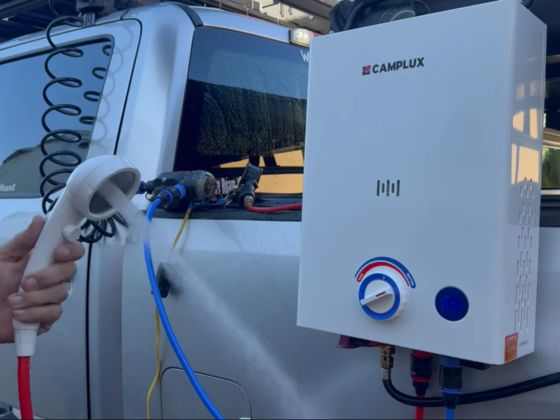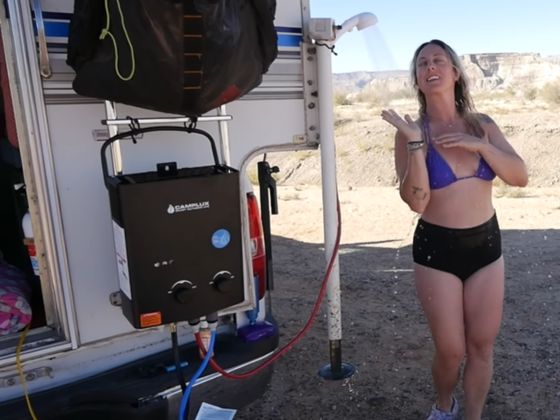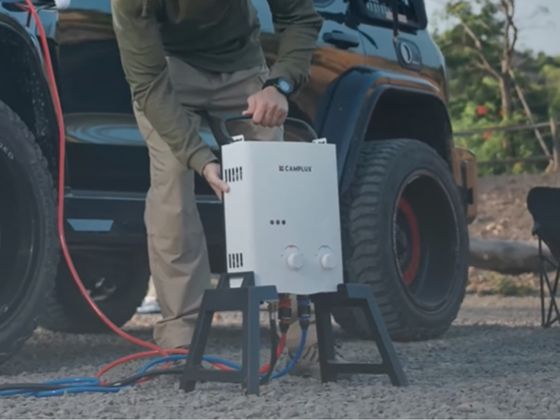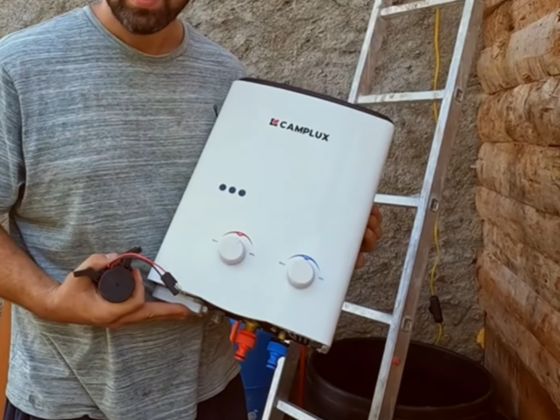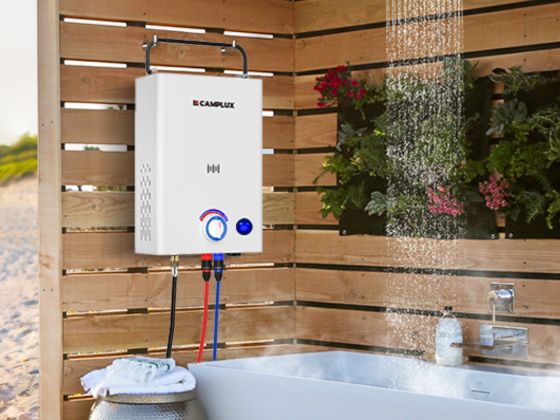Why Hot Water On-the-Go Matters
Picture this: a weekend camp by the river, a caravan meetup on the coast, a backyard birthday with half the street turning up, or a pop-up shearing day on a remote station. Everything’s going swimmingly—until someone needs a proper wash, the kids are caked in sand, dishes are stacked high, and there’s only a chilly tap. Hot water instantly changes the vibe from “make do” to “too easy.”
For outdoor events, hot water isn’t a luxury; it’s comfort, hygiene, and smooth operations rolled into one. You cut down on cold-water queues, help everyone clean up properly, and keep the site tidy without improvising with kettles or jerry cans. That’s why so many Aussies lean toward Camplux: portable, LPG-ready units tuned for local conditions that make hot water feel like part of the scenery—no dramas.
Who It’s For & Where It Shines
If you’re a camper, caravanner, van-lifer, off-grid family, remote resident, or an event host wrangling a crowd, a portable unit fits straight into your kit. You can set up a dedicated hand-wash station for food handling, rinse off sandy groms before they hop into the swag, give the dog a quick once-over after a muddy romp, and smash through the stack of pans after a big communal cook-up.
Short, one-off setups—think a weekend at a national park or a backyard do—benefit from “plug-and-play” gear that packs down fast. Semi-permanent scenarios like farm stays, seasonal camps, or recurring community events value sturdier fixtures, a pump for low-pressure water sources, and consistent flow for multiple back-to-back showers. Either way, you’re aiming for comfy water pressure, steady temperature, and a system happy to run without mains power.
What a Portable System Includes (Plain-English)
A portable unit is basically a mini version of your home gas heater—designed to travel. You’ve got four pieces of the puzzle:
Water source. This can be a tap at a campground, a rainwater tank, or even a jerry can. If your source has little to no pressure, a compact 12V pump does the heavy lifting. Think of the pump as a gentle “personal trainer” for your water—gives it the oomph to push through hoses and create a satisfying spray.
Heat source. Most Aussie setups use LPG bottles (9 kg being common). The heater sips gas, warms the water as it passes through, and delivers a steady stream. It’s the familiar energy you’d use on a barbie, turned into shower-time bliss.
Ignition & power. Battery ignition or low-voltage start means you don’t need mains power. Pop in batteries, hook up gas and water, and you’re off. The unit automatically fires when you open the shower head or tap.
Outlet & fittings. A shower head with a trigger, a simple tap, or a portable shower tent completes the station. A regulator ensures safe gas pressure, quick-connects make setup tool-free, and a small inline filter keeps grit from your pump and heater internals.
Key Specs Explained Like Everyday Things
Specs shouldn’t feel like a chemistry class. Here’s how to read them without the headache.
Flow rate (L/min). This is how much water the unit can push out each minute. As a rule of thumb, around 8 L/min feels like a comfortable everyday shower. Imagine a tap going from a trickle to a proper stream—that’s the jump you notice moving from 5 to 8 L/min. If you’ll be rinsing dishes and showering one after the other, 8 L/min is a sweet spot for small groups.
Temperature rise (°C). If flow rate is the size of the stream, temperature rise is the “climbing power” that pushes cold inlet water up to your target warmth. The colder your source (alpine creek, winter tank), the more temperature rise you’ll want. It’s like towing up a hill: a stronger engine (higher °C rise) keeps pace without labouring.
Water pressure (kPa/PSI). Pressure gives you that satisfying spray. Low-pressure camp taps or gravity-fed tanks may feel limp without a pump. Add a 12V pump and the shower head wakes up—simple.
Gas consumption (MJ/h). This tells you how much “fuel stamina” your heater uses. It helps estimate how long a 9 kg bottle will last given your pattern of showers and washing. For a typical weekend—two to four short showers plus dish duty—you’re usually nowhere near draining a fresh bottle.
Approvals & safety layers. Look for AGA approvals and multi-layer protections such as flame-out detection, overheat cut-off, and anti-freeze modes. These are the quiet heroes that make portable systems feel worry-free.
Concrete Benefits for Events (Host & User Views)
Hygiene and compliance. Dedicated hot-wash points near food prep and toilets reduce cross-contamination. If you’re running a club comp or a community fundraiser sausage sizzle, it’s reassuring to tick that box.
Experience boost. No one loves a cold shower after a surf or a dusty track. Hot water keeps families cheerful, guests lingering longer, and the vibe relaxed. Host-wise, it’s the difference between “that’ll do” and “that was mint.”
Operational ease. Portable systems are quicker to set up and pack down than you’d think—especially with quick-connect hoses and a tidy pump kit. You’re not trenching lines or begging for mains access.
Cost & sustainability. You reuse the same bottle and unit across multiple weekends and events. Compared to renting a mobile shower block every time, a one-off purchase amortises fast—especially for regular campers, clubs, or remote properties.
Why Camplux, Which Model
Camplux focuses on outdoor gas heating and understands Aussie use cases—windy coastal spots, dusty tracks, cool alpine mornings, and the ubiquity of the 9 kg LPG bottle. The gear is purpose-built: robust fittings, straightforward controls, and accessories that solve the annoying bits (like low inlet pressure or awkward mounting).
A go-to pick for families and small groups is the Camplux BV158—an 8 L/min outdoor unit that lands right in the comfort zone for showering and rinse stations without feeling “stingy.” Think of it as the easy-going all-rounder: enough flow for a proper scrub, compact enough to hang or mount without fuss.
If you’re mostly weekender-style—quick showers, rinsing sandy feet, cleaning cookware—Camplux’s lighter portable range hits the brief. Match your kit with a 12V pump if your water source is shy on pressure, and consider an inline filter to keep silt out of the works. A pop-up shower tent turns any corner of the camp into a private cubicle—very civilised.
Fast chooser tips. Count people, consider how cold your inlet water will be (winter river vs summer tank), and decide if you’ll run a pump. That triangle—people, temperature, pressure—points straight to your ideal flow band and accessories.
From Box to Hot Water in Five Steps
-
Connect water. If there’s a pressurised tap, hook the hose straight in. No pressure? Drop a pickup hose into your tank/jerry can and attach the 12V pump inline.
-
Attach LPG. Mount the regulator to your 9 kg bottle, then connect the gas hose to the unit. Hand-tighten and check for leaks using soapy water—bubbles mean re-seat the fitting.
-
Fit the outlet. Clip on the shower head or tap hose. A trigger-style handset helps with water saving between rinses.
-
Power & settings. Pop in fresh batteries if your unit uses them. Open the gas, start the water, then dial your temperature and flow. Start moderate; you can tweak quickly once you feel the spray.
-
Test & adjust. In cold weather, slow the flow slightly to give the heater more time to lift the temperature. In windy spots, position the unit out of gusts and keep hoses free of kinks.
That’s it—hot water on tap without hunting for mains power or permanent plumbing.
Safety Essentials & FAQs
Use in open, ventilated areas. These are outdoor units. Never run them in a closed van or tent. Keep clear of canvas and store the bottle upright on stable ground.
Anti-scald habits. If you’ve got little ones or older family members, set a “ceiling” temp and stick to it. A quick wrist test before kids jump in does the trick.
Cold weather. In frost-prone areas, drain the unit after use. If your weekend includes a freezing dawn, a protective cover and a few extra minutes of warm-up help maintain stable temps.
Ignition hiccups. Check batteries (if used), verify gas is open, and confirm decent water flow. No joy? Reduce flow slightly to allow ignition and temperature rise to catch up, then re-open.
Fluctuating temps. This is often a pressure or flow issue. Ensure the pump is powered and intake isn’t sucking air. Clean the inline filter and inspect for hose kinks.
Low pressure sources. Add or upsize a 12V pump. A small boost can transform a dribbly spray into a proper shower.
Gas usage questions. Short showers and smart trigger use between rinses make a big difference. You’ll be surprised how far a 9 kg bottle goes when everyone keeps it snappy.
Cost & Value: Buy Once, Reuse Often
Consider a basic comparison. Hiring a mobile shower trailer might solve a single big event, but it’s overkill for most weekends and smaller gatherings—plus you’re at the mercy of availability, delivery windows, and site access. A compact portable unit is a pay-once asset that follows you everywhere: beach camps, cricket club days, school fundraisers, and farm chores.
Budgeting is straightforward. Gas costs are predictable across weekends, water comes from your tap or tank, and the setup time becomes muscle memory. Over a season of camping and community events, the unit pulls its weight many times over. And unlike fixed plumbing, you can pivot on the day: move the wash station to the shady side, split outlets to a second rinse point, or pack away early if the weather turns—too easy.
Real-World Scenarios You’ll Nail
Caravan rally. Set a central shower tent with a Camplux unit and pump. Rinse station doubles for dishes in the arvo—quick squeeze on the handset between pans saves water.
Beach cricket day. Kids and boards come back salty. Trigger showers at the utes for a fast clean-up before the sausage sizzle. No more salt in the car seats, cheers.
Farm working bee. Dust, grease, and animal muck are part of the gig. A portable wash station next to the shed keeps mess out of the house and tools clean for the next job.
Backyard party. Hand-wash point near the grill, hot water for quick plate rinses, and a discreet rinse spot if the little ones find the mud—everyone stays comfy, the host stays sane.
A Note on Jargon (Decoding the Lingo)
If you see AGA on the spec sheet, that’s an Australian approval stamp—good news for safety. MJ/h looks technical, but just think “fuel burn rate”—lower consumption stretches each bottle. L/min is simply “how big the stream feels” at the shower head. And 12V pump means a small, battery-friendly booster that turns a lazy trickle into a proper spray.
Once you’ve understood these, choosing a unit is like picking the right esky: size to your crew, the climate, and how often you’re out and about.
Wrap-Up & Quick Next Step
Portable hot water takes outdoor events from rough-and-ready to relaxed and well-run. With a Camplux setup—especially something in the 8 L/min comfort zone—you get reliable, family-friendly showers and wash stations that set up anywhere you do. Count people, check your inlet water temp, decide on a pump, and you’ll land on the right kit in no time. Plan your next outing knowing hot water’s sorted—too easy.

